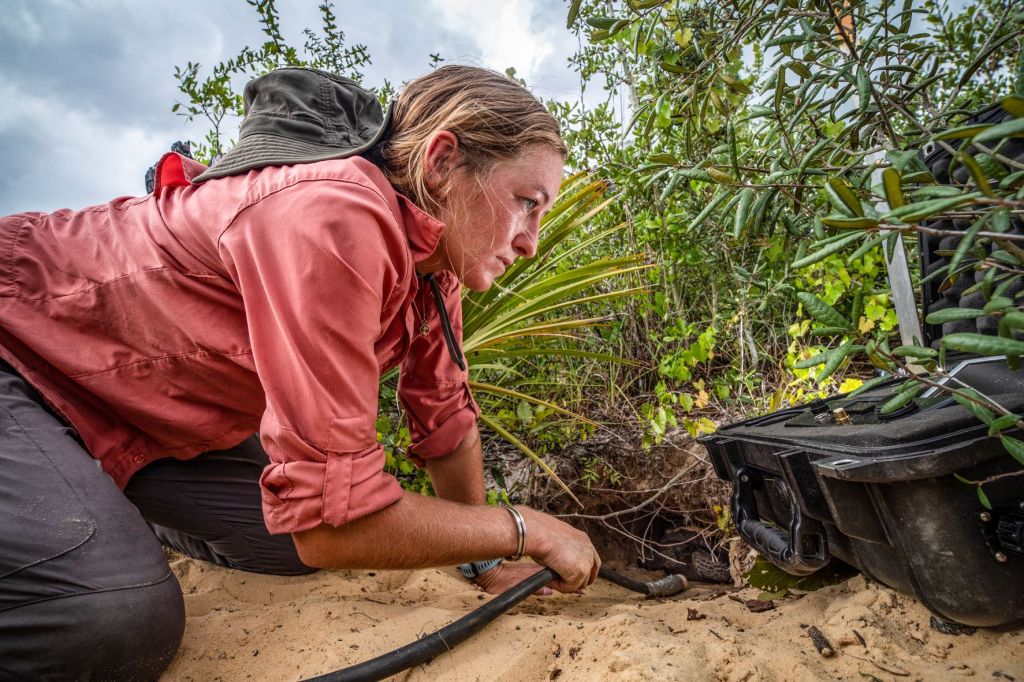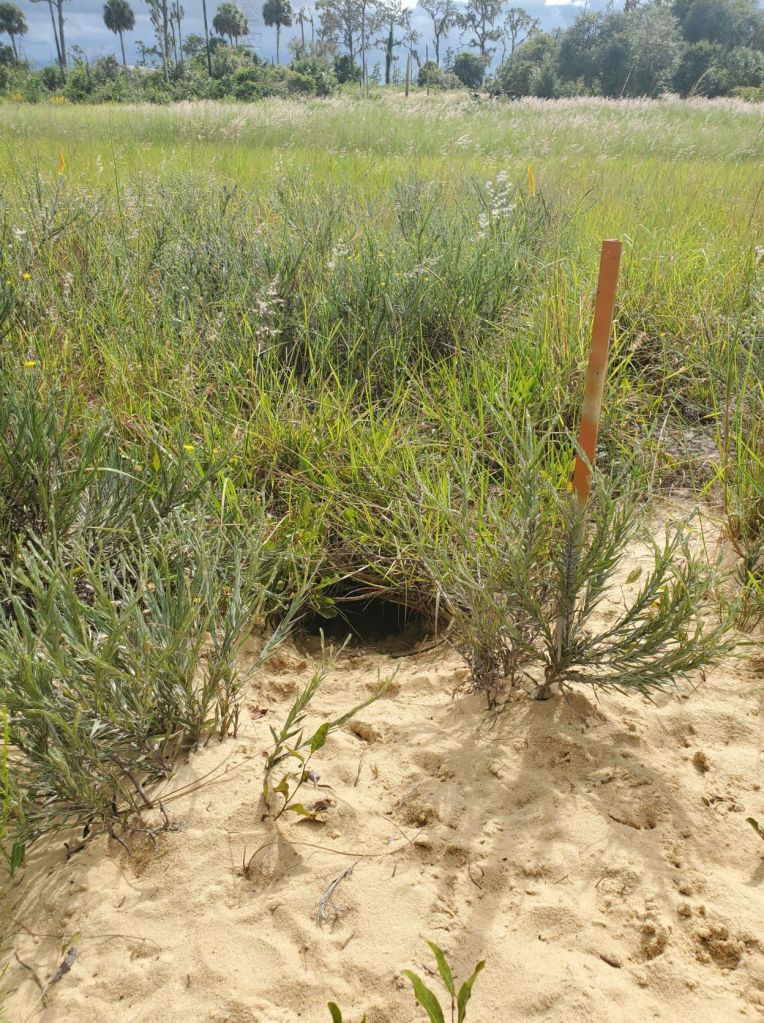
Authors: Chelsea Moore, Betsie Rothermel, and Alonso Reyes
To us surface-dwellers, the humble home of a Gopher Tortoise looks like just another hole in the ground. But in upland natural areas, Gopher Tortoises serve a vital role as ‘ecosystem engineers’ simply by doing what they do best…that is, digging. These expert excavators use their strong front legs to dig burrows that can be more than 40 feet long. Though the primary motivation for these terrestrial turtles is to avoid temperature extremes and stay safe from predators, their extensive burrowing is a boon to the rest of the community.
The Gopher Tortoise is considered a keystone species whose presence boosts the number and diversity of other wildlife. Their burrows are used by more than 300 other animal species, including mice, rabbits, frogs, lizards, snakes, and a host of invertebrates, some of which are quite rare and entirely dependent on tortoises for their survival. While some species take up residence alongside the tortoises, others use the burrows as occasional refuges from predators or fires. This is important because frequent prescribed burning is needed to maintain upland habitats in all six southeastern states where Gopher Tortoises occur.
“One of the most amazing things I’ve learned and had the chance to observe while working in tortoise habitat at Archbold is the variety of animals that depend on tortoise burrows. Some of the coolest animals we have seen in burrows this year have been the Gopher Frog, Whip Scorpion, Eastern Coral Snake, and Florida Scarlet Snake. The number of insects that I have seen coming out of the burrows at night is amazing, too,” says Alonso Reyes, a research assistant in the Archbold Restoration Ecology & Herpetology Program.
Although tortoises are surprisingly tolerant of most of these visitors, they rarely share burrows with each other and will evict unwanted intruders by ramming and shoving them. It is not uncommon for a tortoise to reinhabit a previously abandoned burrow after several weeks or months, or use a burrow previously occupied by another tortoise. Archbold researchers are just beginning to analyze long-term data on individually marked tortoises to uncover the rules governing this game of ‘musical burrows.’
Wildlife biologists can learn a lot about a tortoise population just by surveying for burrows. The earlier long-term research conducted by Dr. James N. Layne and colleagues at Archbold established important findings, for example: the width of the burrow is approximately equal to the length of the resident tortoise. Even hatchling tortoises can dig their own burrows soon after emerging from their underground nests. Though the hatchlings themselves are very good at staying hidden, the presence of burrows less than 6 inches wide tells us at least some adult tortoises are successfully producing young. With experience, one can learn to distinguish the half-moon-shaped burrow of a tortoise from the round or oval-shaped burrows made by rodents and armadillos.
“However, we can’t simply count burrows to find out how many tortoises live in an area, because each tortoise creates many burrows throughout its life and may use several burrows during the year,” explains Archbold Herpetology Program Director Betsie Rothermel. “This is where our customized burrow scope comes in. The scope consists of a long hose with a camera and a light on one end. The other end connects to a video monitor aboveground so we can guide the hose down the burrow as far as it will go…or until it runs into a tortoise! Fortunately, tortoise burrows only have one entrance.”
Various other clues can indicate whether a burrow is currently occupied. Archbold research intern Chelsea Moore has been tracking juvenile tortoises twice a week for a project supported by Disney Conservation Fund. She notes, “On tracking days, I visit close to 30 burrows. I decide if a burrow is active by looking for tortoise tracks or slide marks made by their shell. It’s always fun seeing other animal signs, too, like opossum tail drags or snake trails! The sand keeps a good record of visitors.”
Numbers of Gopher Tortoises continue to drop throughout Florida as their habitats are bulldozed and divided by roads. The species is designated as Threatened and protected under State law. Florida Fish and Wildlife Conservation Commission regulations specify: “…No person shall take, attempt to take, pursue, hunt, harass, capture, possess, sell or transport any gopher tortoise or parts thereof or their eggs, or molest, damage, or destroy gopher tortoise burrows, except as authorized by Commission permit…” (https://myfwc.com/license/wildlife/gopher-tortoise-permits/). As demonstrated above, protecting tortoise burrows also keeps many other animals from losing their homes.

